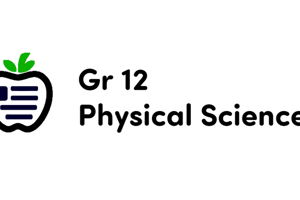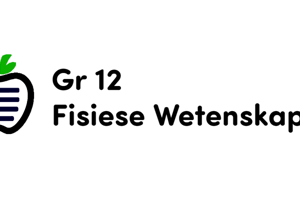Podcast
Questions and Answers
What is the correct IUPAC name for the compound represented as 3-ethyl-2,2-dimethylhexane?
What is the correct IUPAC name for the compound represented as 3-ethyl-2,2-dimethylhexane?
- 2-ethyl-3,3-dimethylpentane
- 3-ethyl-2,2-dimethylheptane
- 3-ethyl-2,2-dimethylhexane (correct)
- 2-ethyl-3,3-dimethylhexane
How many hydrogen atoms are present in 2.00 moles of glucose (C6H12O6)?
How many hydrogen atoms are present in 2.00 moles of glucose (C6H12O6)?
- 24 (correct)
- 18
- 6
- 12
What is the molecular formula for the compound with the IUPAC name 'iron(III) sulfate'?
What is the molecular formula for the compound with the IUPAC name 'iron(III) sulfate'?
- Fe2(SO4)3 (correct)
- Fe(SO4)2
- Fe(SO4)3
- Fe2SO3
What type of isomerism is observed in compounds that are specified as 'cis' or 'trans'?
What type of isomerism is observed in compounds that are specified as 'cis' or 'trans'?
In the calculation of molar masses, what is the correct molar mass of CaCl2?
In the calculation of molar masses, what is the correct molar mass of CaCl2?
How would you classify the compound represented as Pb3(PO4)4 in terms of its formula units?
How would you classify the compound represented as Pb3(PO4)4 in terms of its formula units?
In dimensional analysis, how many moles are in 5.25 x 10^25 atoms of Au?
In dimensional analysis, how many moles are in 5.25 x 10^25 atoms of Au?
What is the correct line-angle formula representation of a hexane compound with two substituents?
What is the correct line-angle formula representation of a hexane compound with two substituents?
What mass of oxygen gas is present in 2.50 liters at STP, given the density is 1.43 g/L?
What mass of oxygen gas is present in 2.50 liters at STP, given the density is 1.43 g/L?
What is the empirical formula of a compound with 21.8% Mg, 27.9% P, and 50.3% O?
What is the empirical formula of a compound with 21.8% Mg, 27.9% P, and 50.3% O?
How would you calculate the molarity of a solution prepared by dissolving 11.5 g of NaOH in 1.50 L of solution?
How would you calculate the molarity of a solution prepared by dissolving 11.5 g of NaOH in 1.50 L of solution?
Given the reaction 2H2O2 -> 2H2O + O2, how many moles of O2 are produced from 0.450 moles of H2O2?
Given the reaction 2H2O2 -> 2H2O + O2, how many moles of O2 are produced from 0.450 moles of H2O2?
What volume of NH3(g) at STP is needed to react with 1.50 moles of O2?
What volume of NH3(g) at STP is needed to react with 1.50 moles of O2?
What is the molecular formula of a gas with an empirical formula of CH2 and a mass of 0.938 g for 0.500 moles?
What is the molecular formula of a gas with an empirical formula of CH2 and a mass of 0.938 g for 0.500 moles?
How many moles of F2(g) are required to produce 5.00 moles of IF5(g) according to the equation?
How many moles of F2(g) are required to produce 5.00 moles of IF5(g) according to the equation?
What process is used to find the simplest whole-number ratio for converting percentage composition to empirical formula?
What process is used to find the simplest whole-number ratio for converting percentage composition to empirical formula?
Flashcards
Molar Mass
Molar Mass
The number of grams in one mole of a pure substance.
Mole
Mole
A unit of amount that represents 6.022 x 10^23^ particles (atoms, molecules, or formula units) of a substance.
Dimensional Analysis
Dimensional Analysis
The process of using conversion factors and dimensional analysis to solve chemistry problems.
Density
Density
Signup and view all the flashcards
STP
STP
Signup and view all the flashcards
Molecule
Molecule
Signup and view all the flashcards
Formula Unit
Formula Unit
Signup and view all the flashcards
Structure Formula
Structure Formula
Signup and view all the flashcards
What is an empirical formula?
What is an empirical formula?
Signup and view all the flashcards
What is molar concentration?
What is molar concentration?
Signup and view all the flashcards
How to calculate percentage composition?
How to calculate percentage composition?
Signup and view all the flashcards
What is a molecular formula?
What is a molecular formula?
Signup and view all the flashcards
How to find a molecular formula?
How to find a molecular formula?
Signup and view all the flashcards
How many molecules in a sample?
How many molecules in a sample?
Signup and view all the flashcards
What is stoichiometry?
What is stoichiometry?
Signup and view all the flashcards
What is a mole?
What is a mole?
Signup and view all the flashcards
Study Notes
Organic Chemistry Exam - Part 1
-
IUPAC Naming: This section of the exam requires students to name organic compounds using the International Union of Pure and Applied Chemistry (IUPAC) system.
-
Structure Formulas: Sketch the structural formula for given hydrocarbons, detailing the arrangement of atoms and bonds.
-
Line-Angle Formulas: Draw the line-angle formula of the hydrocarbons to show carbon-carbon bonds and substituents.
Organic Chemistry Exam - Part B
- IUPAC Names of Organic Compounds: Provide the IUPAC names of various organic compounds based on their structures.
Organic Chemistry Exam - Part C
- Cis-Trans Isomers: Identify whether the provided compounds are cis or trans isomers, explaining the geometric configuration.
Organic Chemistry Exam - Part D
- IUPAC Names of Cycloalkanes, Cycloalkenes, and Cycloalkynes: Provide the IUPAC names of cycloalkanes, cycloalkenes, and cycloalkynes in the structures.
Organic Chemistry Exam - Part E
- IUPAC Names of Aromatic Compounds: Generate the IUPAC names of given aromatic compounds, using prefixes like ortho, meta, or para.
Organic Chemistry Exam - Part F
- Functional Groups: Identify the functional groups present in different compounds.
Mole Concept
-
Molar Masses: Calculate molar masses of various compounds like CaCl2, Fe2(SO4)3, Pb3(PO4)4 and others.
-
Mole-Molecule-Atom Conversions: Convert between different units like moles, molecules, and atoms, utilizing Dimensional Analysis.
-
Volume and Density: Perform calculations related to the volume and density of substances. This includes calculations using STP conditions.
Stoichiometry
- Mole Conversions: Utilize balanced chemical equations to determine moles of reactants and products.
- Stoichiometric Calculations: Determine amounts of reactants or products involved in reactions based on given quantities and balanced equations.
- Molarity Calculations: Calculate the molarity of solutions.
- Chemical Formulas: Calculate the empirical and molecular formulas of compounds given percentages and masses of their elements.
Studying That Suits You
Use AI to generate personalized quizzes and flashcards to suit your learning preferences.




